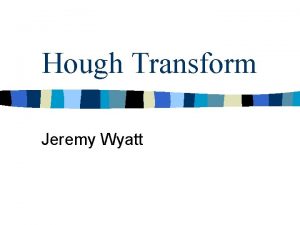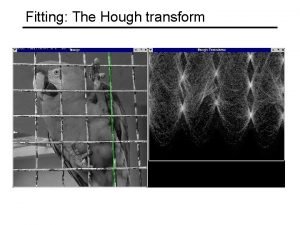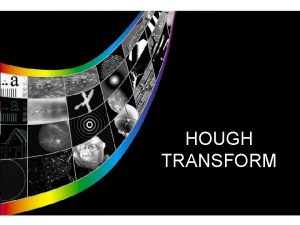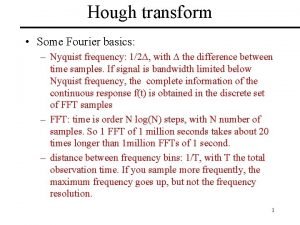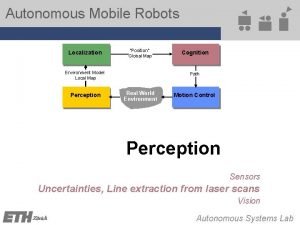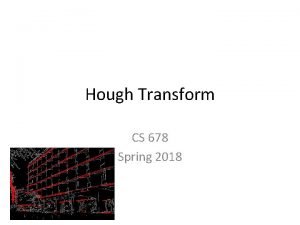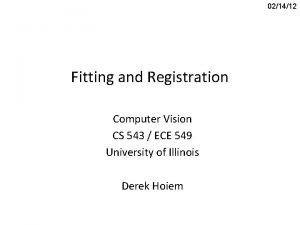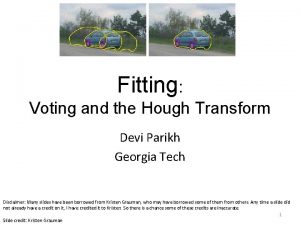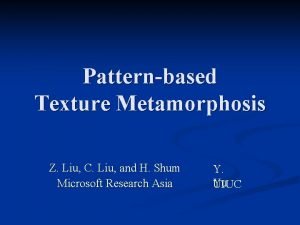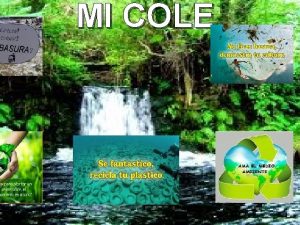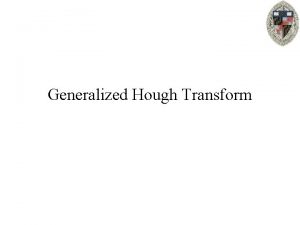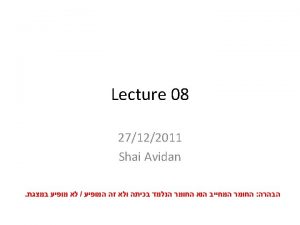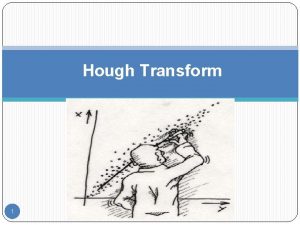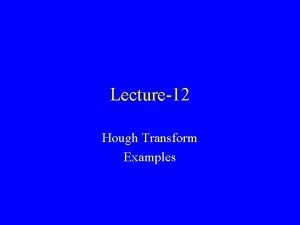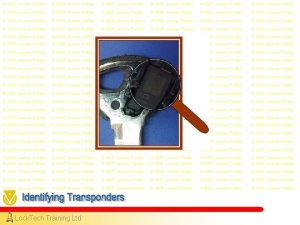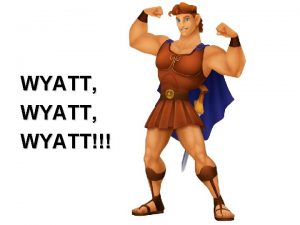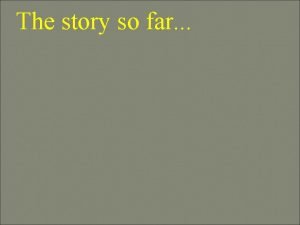Hough Transform Jeremy Wyatt The story so far













- Slides: 13

Hough Transform Jeremy Wyatt

The story so far We know how to find edges by convolving with the derivative of a Gaussian filter in two directions We then align the resulting images and calculate the magnitude of the intensity change We can threshold this intensity change magnitude x = conv 2(shakey, first_order_gaussian_filter_1 d_length 5, 'valid'); y = conv 2(shakey, first_order_gaussian_filter_1 d_length 5', 'valid'); [x, y] = clip(x, y); m = magnitude(x, y); figure(1) show_image(shakey) figure(2) show_image(m>20)

Finding edge features But we haven’t found edge segments, only edge points How can we find and describe more complex features? The Hough transform is a common approach to finding parameterised line segments (here straight lines)

The basic idea Each straight line in this image can be described by an equation Each white point if considered in isolation could lie on an infinite number of straight lines

The basic idea Each straight line in this image can be described by an equation Each white point if considered in isolation could lie on an infinite number of straight lines In the Hough transform each point votes for every line it could be on The lines with the most votes win

How do we represent lines? Any line can be represented by two numbers Here we will represent the yellow line by (w, f) In other words we define it using - a line from an agreed origin - of length w - at angle f to the horizontal f w

f Hough space w Since we can use (w, f) to represent any line in the image space We can represent any line in the image space as a point in the plane defined by (w, f) f=0 This is called Hough space f=180 w=100

How does a point in image space vote? f f=0 w f=180 w=100

How do multiple points prefer one line? One point in image space corresponds to a sinusoidal curve in image space Two points correspond to two curves in Hough space The intersection of those two curves has “two votes”. This intersection represents the straight line in image space that passes through both points

Hough Transform Create f and w for all possible lines Create an array A indexed by f and w for each point (x, y) for each angle f w = x*cos(f)+ y*sin(f) A[f, w] = A[f, w]+1 end where A > Threshold return a line

A simple example f w


Hough Transform n There are generalised versions for ellipses, circles n For the straight line transform we need to supress non-local maxima n The input image could also benefit from edge thinning n Single line segments not isolated n Will still fail in the face of certain textures
